The 2M Alliance (Maersk Line & MSC) has announced that it will not be deploying any additional capacity into the market during an upgrade to the 2M Alliance network. The two carriers have revealed changes to services across the major trade lanes between Asia, Europe and North America, and include slot swaps with Hamburg Süd and Hyundai Merchant Marine. The new network comes into effect on 1st April when the new alliance structures come into place. HMM and Hamburg Süd will provide cargo, but will not operate vessels in the 2M network.
Vessel sizes, up to 13,000 TEU capacity, on the various routes are unlikely to change. New services will be introduced, branded by Maersk as AE7 in the Asianorthern Europe trade, and the TP16 on the Pacific. The AE7 loop will upgrade the line Asia to Europe services, reducing the transit time from Shanghai to Rotterdam and Hamburg by three days. On the Pacific, the TP16 will reduce transit times between Asia and the US east coast by eight days. In addition, Maersk Line will merge the TP8 and TP3 services between Asia and the US west coast into one service, the TP8. MSC will operate five services on the Asia-US west coast, five on the US east coast and six between Asia and Europe.
APL’s 71,867gt/2007 built APL Austria suffered a fire off the Eastern Cape on 12th February. Arrangements were made to take the vessel into the Port of Ngqura, where firefighters were on standby. The ship was 30 nautical miles south-west of Cape St Francis when the fire broke and was carrying several containers of hazardous cargo, none of which were affected. Once the ship was alongside in port efforts were made to remove some of the cargo on board to safety and the 21 crew members were evacuated. The fire itself took three days to extinguish. By the night of 14th February 281 containers had been removed from the ship. The source of the fire was in No.4 cargo hold so all containers on either side of the affected zone were unloaded to create working space and a fire-break on deck. The contents of burnt containers were also deposited into skips ashore.
COSCO (Guangdong) Shipyard secured a contract in early March to build three 1,750 TEU capacity containerships for a European buyer. Deliveries for the ships are scheduled for the fourth quarter of 2019, the first quarter of 2020 and the second quarter of 2020. Industry sources suggest that this trio are an option being exercised by Londonbased Lomar Shipping from an order originally placed in August 2016.
Diana Containerships Inc. has announced that, through a separate wholly-owned subsidiary, it has entered into a time charter contract with Hapag-Lloyd AG, Hamburg, for one of its PostPanamax container vessels, the 66,332gt/2004 built March, for a period of 9-14 months. The gross charter rate is $1 per day for the first 15 days of the charter period and $6,850 per day for the balance period of the time charter, in each case minus a 1.25% commission paid to third parties. The charter commenced on 23rd February. The March is a 5,576 TEU capacity container vessel.
The Shipowner also entered into a contract with CMA CGM for the 71,786gt/2008 built and 6,494 TEU capacity PostPanamax container vessel, Rotterdam (above). The gross charter rate is $6,890 per day, minus a 3.5% commission paid to third parties, for a period of 8-11 months. The charter was expected to commence on 7th March.
On 8th April another Diana owned ship, the 66,332gt/2004 built Great (above), commenced a charter with OOCL. The gross charter rate is $7,300 per day, minus a 3.75% commission paid to third parties, for a period of 9-12 month. This charter is anticipated to generate approximately $1.97 million of gross revenue for the minimum scheduled period of the time charter.
Eimskip’s acquisition of Nor Lines was blocked in February by the Norwegian Competition Authority (NCA), citing concerns over reduced competition and the potential for shippers being subject to increased rates. This preliminary decision had been reached because the two carriers were close competitors in the transport of fish produce in reefer vessels from Norway’s northern waters. However, the NCA said that all parties would be given the opportunity to present their cases, with a final decision to be made in early April. The Icelandic logistics group announced in November that it had reached a deal to acquire Nor Lines for €15m, its third acquisition in two years, after Rotterdam-based forwarders Jac Meisner in 2015 and Extraco Internationale Expedite in October.
Hanjin Shipping was officially declared bankrupt on 17th February after operating for four decades. The liquidation value of the shipping line, which was founded in 1977, was said to be $1.56m and the court said in a statement it had chosen a bankruptcy administrator, and that claims by creditors were due by 1st May 2017. The first meeting of creditors will be held on 1st June 2017.
Four more vessels previously owned by Hanjin Shipping were sold by the High Court in Hong Kong during February. The vessels were a quartet of 13,092 TEU containerships built in 2012 and 2013, namely the 141,754gt built Hanjin Sooho (above), Hanjin America, Hanjin Blue Ocean and Hanjin Green Earth.
They have since been renamed Maersk Eureka, Maersk Enshi, Maersk Esmeraldas and MSC Perle. All four units were arrested and repossessed by HSH Nordbank. The three that will go on charter to Maersk sold for $133.1m each and the MSC Perle for $120.8m. The buyers remain unknown. After a six-month stay at anchor, the 65,918gt/2000 built Hanjin Vienna departed British Columbian waters as March arrived, bound for Asia and scrapping. She should arrive in Singapore on 4th April. She left behind the 45,169gt/2013 built Hanjin Scarlet, which remains in Canadian waters for sale.
The 65,184gt/1998 built traditional panamax Hanjin Rome was listed as sold on 1st March at the Singapore Supreme Court.
MSC is in talks to acquire a stake in smaller Italian counterpart Messina. The company held a meeting in February in Genoa with Messina and senior management from lender Banca Carige. The latter is Messina’s key lender and also a major financier for Genoa-based shipping companies. Prior to the meeting, Genoa-based Carige reported a €297 million loss for 2016. Founded in 1921, Messina has a small fleet of specialised ro-ro container ships.
From April 2017 MSC is to operate its US West Coast-Asia Lotus Service outside of the 2M Network. The service enables MSC to provide customers with increased regularity of departures and a wider selection of ports.
The service will offer direct connections to/from South East Asia, South China, Taiwan, South Korea, Thailand, and Vietnam. The service will operate outside the 2M network on a slot-swap agreement between MSC and Hyundai Merchant Marine.
Hyundai Merchant Marine (HMM), South Korea’s flagship carrier, is set to receive a sizeable KRW720bn ($632m) in state funds to shore up its financial position as well as order a number of new containerships and tankers. New state-backed ship finance operation Korea Shipping Co. will aid HMM financially in various ways. The finance company will buy ten containerships and lease them to HMM whilst HMM will order five such ships and three tankers using the funding.
Maersk Line’s 74,642gt/2007 built and 6,200 TEU capacity Maersk Kensington (above) had three containers knocked off her decks at APM Terminal’s Port Elizabeth, part of the Port of New York and New Jersey, (containing kitchen equipment and cars) when a crane operator accidentally knocked them.
The ship operates Maersk’s MECL service, which connects the U.S Gulf and East Coast with the Mediterranean, Middle East and Indian subcontinent. The 194,849gt, 2014 built and 18,300 TEU capacity Margarethe Maersk docked at Cai Mep International Terminal (CMIT) on 20th February, making it the first seaport in Vietnam and the nineteenth in the world able to accommodate the world’s largest Maersk Triple E class container ships.
Maersk Line was scheduled to receive the EU antitrust regulator’s decision on the company’s plan to purchase the Germanybased operator Hamburg Süd by 27th March The deal, reached at the beginning of December 2016 amid a consolidation period in the industry, was filed to the European Commission on 20th February. Hamburg Süd operates 130 container vessels with a container of 625,000 TEUs and is the world’s seventh largest container shipping line.
As of 1st April Maersk Line introduced a new service, the AE7, on the Asia-North Europe trade and a new service, the TP16, on the Transpacific trade. The new services enable MSC and Maersk Line to accommodate the incoming volumes from the recently announced slot purchase agreements with Hyundai Merchant Marine and Hamburg Süd. The two carriers will move cargo, but not operate vessels in the 2M network. The AE7 improves Maersk Line’s product from East China into Rotterdam in The Netherlands and Hamburg in Germany, i.e Shanghai-Rotterdam is 25 days. In the Transpacific, the TP16 provides new opportunities in the Asia-US South Atlantic trade. The transit time from South China to the US South Atlantic improves by eight days, which will be the fastest in the market. In addition, Maersk Line has merged the TP8 and TP3 services between Asia and the US West Coast into one service, the TP8.

During February the 194,849gt/2014 built Merete Maersk (above) lost 43 containers in the Mediterranean Sea off Skikda, Algeria. The vessel was en route from Tanjung Pelepas to Algeciras, but passed through a heavy storm with strong winds, which caused around 130 containers to become unseated on the main deck. The strong winds and heavy seas broke the secure belts and 43 containers fell overboard into the sea, while another 85 were damaged. The ship altered course to reduce the negative effect of the weather and proceeded to Algeciras. The accident was reported to local authorities and a temporary navigation warning was issued to seafarers for drifting objects in the sea. Some 16 containers were spotted drifting off the Algerian coast, but the rest were presumed sunk or adrift elsewhere.
Maersk Line decided to divert vessel calls from the Port of Algeciras as March arrived due to the planned strikes by Spanish dockworkers. On 24th February Spain approved a royal decree on the port system reform which would enable ports to hire non-unionised stevedores instead of the unionised ones. Such practice would result in massive layoffs in the future. Consequently, the country’s stevedores planned to stage strikes on 6/8/10/13/15/ 17/20/22/24 March.
Slow-downs had begun at all Spanish ports from 24th February and were expected to continue until the strikes started. Maersk developed a contingency plan to divert westbound ships away from Algeciras during the period of the industrial actions to alternative ports in Europe and the Mediterranean. Eastbound vessels continued to call at Algeciras for the time being.
Tropical Shipping, the largest provider of logistics solutions to the Bahamas and Caribbean, ordered a series of MAN propulsion packages in China during February to complement an expansion of its vessel fleet. The company has ordered four 1,100- teu container vessels, each equipped with a MAN B&W 6S60ME-C8.5 main engine, complete with TCA66-21 turbocharger and an SCR (Selective Catalytic Reduction) module to achieve Tier III compliance. The propulsion package also features three MAN 6L23/30 Holeby Generator Sets with MAN TCR14 turbochargers, as well as the latest generation of CP propellers, the VBS1550-5 Mk5, which is a five bladed design combined with the MAN Alpha rudder- bulb concept.
The new vessels are due to enter service from June 2018 onwards.
Tropical Shipping has operated its freight-shipping service between Canada/South Florida and the Caribbean and the Bahamas for over 50yrs. The company delivers comprehensive cargo transportation services with a fleet of 15 vessels.
SM Line, the newly formed South Korean container line created by the Samra Midas (SM) Group after the acquisition of the Asia- North America route from now-defunct Hanjin Shipping, operated its maiden voyage on 8th March along the East and South China Sea. The first voyage departed Busan for calls in China, Thailand, and Vietnam. The carrier’s first full service on its Asia-North America route (Busan-Long Beach) is scheduled for 21st April. SM Line purchased five 6,655 TEU capacity ships on 14th February, formerly of the Hanjin fleet, for $60m.
The vessels are the 74,906gt/2006 built Hanjin Bremerhaven, the 74,962gt/2006 built Hanjin Budapest, the 75,061gt/2006 built Hanjin Port Kelang (above), the 74,962gt/2007 built Hanjin Tianjin and the 74,962gt/2007 built Hanjin Xiamen. Also acquired was a 4,300-TEU and a 1,000-TEU capacity vessel. The company has also leased five container ships with capacity for 2,000-3,000 TEU. Currently the 33rd largest container operator, SM Shipping hopes to expand its fleet to 21 containerships with 110,000-TEU capacity by 2018.
UASC revised the UK call of its 195,636gt/2015 built and 18,800 TEU capacity Al Muraykh (above) from Felixstowe to London Gateway on 25th February due to port congestion at Felixstowe. The ship is deployed by UASC on its AEC1 service from Asia, within the Ocean 3 alliance, together with vessel sharing partners CMA CGM and Cosco.
ZIM of Israel unveiled the final phase of its restructured network in February. As from April the ZIM Med Pacific (ZMP) will serve both the Asia-PNW trade and the Asia-East- Med/Black Sea trades. The service will deploy fifteen 4,500 TEU capacity vessels. Additionally, ZIM is launching a new India-East-Med/Black Sea route, the India Med Express (IMX). The company has also signed a deal with a subsidiary of Allcargo Logistics Limited to provide logistics services in India to its customers.
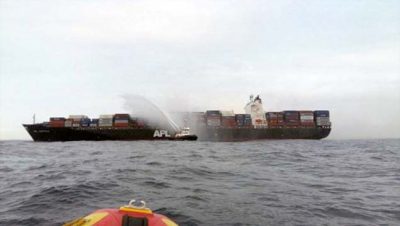
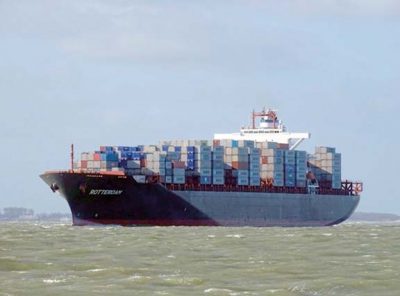
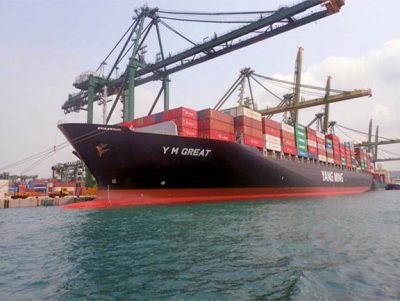
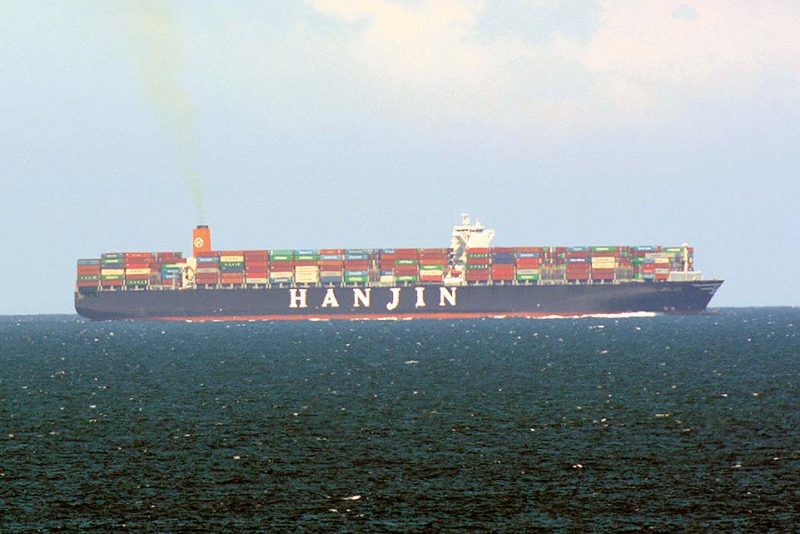
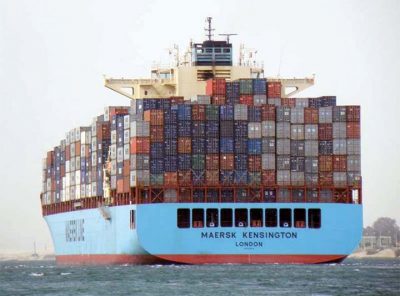
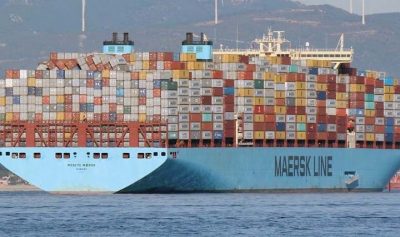
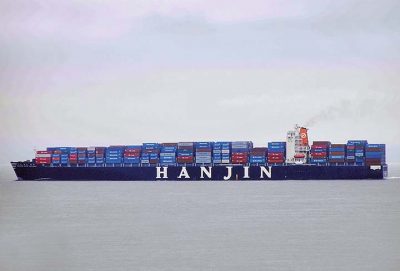

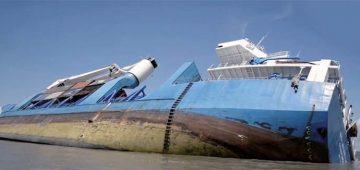



Comments
Sorry, comments are closed for this item